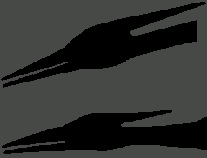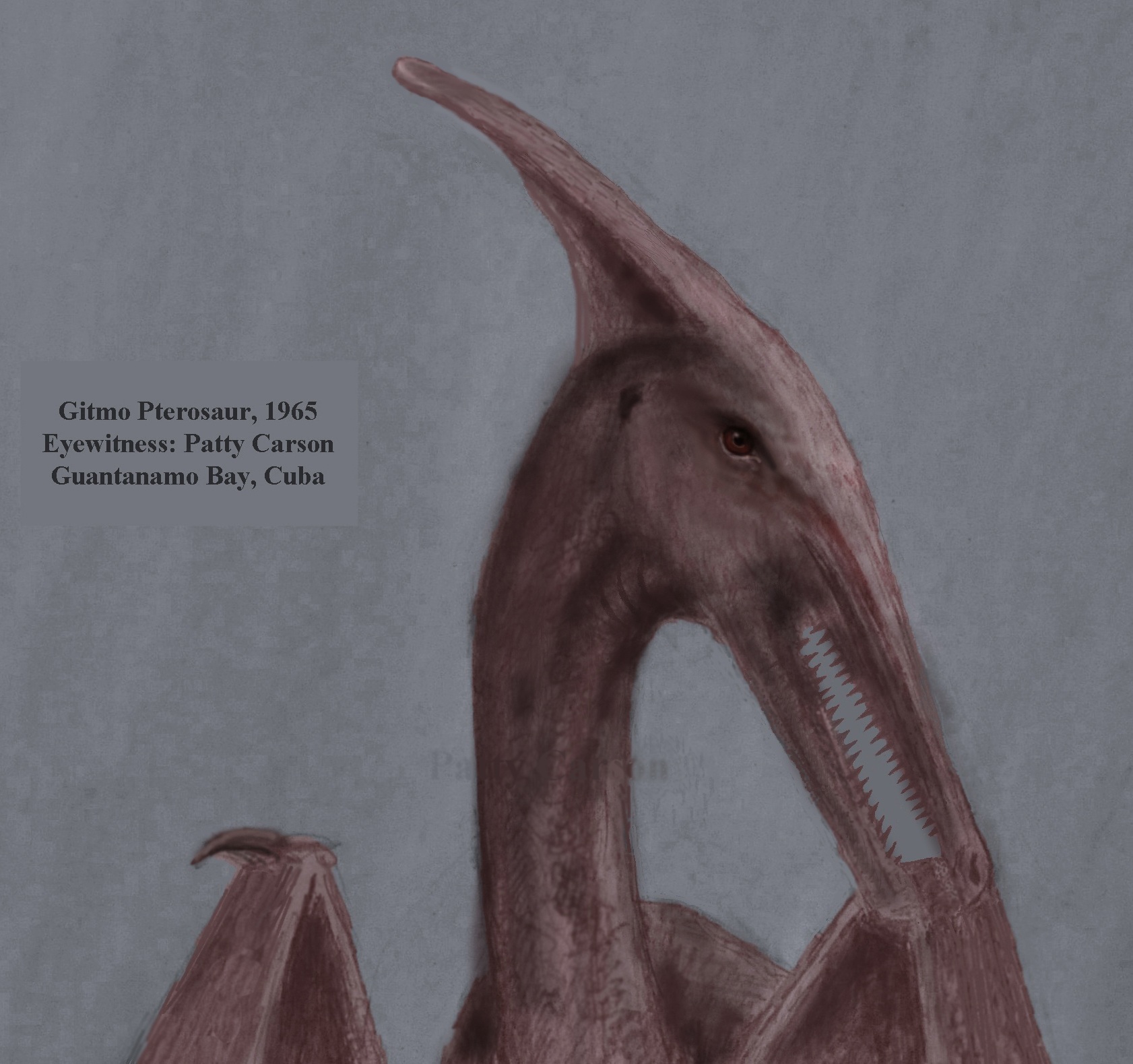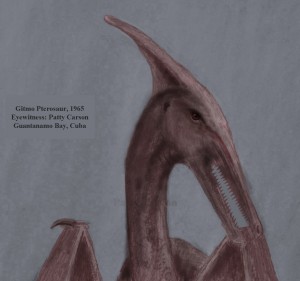Eyewitness’s sketch of a ropen seen in Cuba around 1965
I recently saw a Facebook comment on the group Living Pterosaurs of the World: “What are the Ropens and Pterodactyls?” I made many comments and recommended online resources (including this blog), and recommended my new book, Searching for Ropens and Finding God. But not everybody wants to read a 343-page book about the adventures of searching for giant living pterosaurs and interviewing countless eyewitnesses. Some persons are only a bit curious: What is a ropen?
Consider first the sketch by Patty Carson, above. Notice the apparent lack of feathers and the long head crest. This encounter, around 1965 at Guantanamo Bay, Cuba, was close enough, and long enough, that the eyewitness clearly saw the many small teeth in the open mouth of the creature. Only a few eyewitnesses report teeth. Many report a head crest, but the distinguishing characteristic of ropens is the combination of the lack of feathers and a long tail. Consider the following sketch:

Notice that the mouths of these two flying creatures are closed. The eyewitness Eskin Kuhn reported nothing about teeth. I suggest those two ropens had teeth just like in the mouth of the other creature observed at Guantanamo Bay a few years earlier, but teeth were not visible because of closed mouths. The sketches are not identical, but we should not expect two eyewitnesses to remember every detail exactly the same: Human perception is imperfect. Yet the similarities are striking, are they not?
What about sightings outside of Cuba? Consider two encounters in the southwest Pacific, decades ago: near Finschhafen and on Bougainville Island. (Both locations are now in the national boundaries of Papua New Guinea.) Duane Hodgkinson saw a huge “pterodactyl” in 1944 and Brian Hennessy saw a flying creature that was similar in 1971.

Choices made by two eyewitnesses
Notice the above two sketches: both heads have long pointed head crests. The top image was chosen by Hennessy; the bottom, by Hodgkinson. This does not prove those flying creatures of the southwest Pacific were the same species as the ones flying in Cuba, but it does suggest a similar type. Neither of these two eyewitnesses in New Guinea saw any sign of feathers, but they each saw a long tail. That is a key with ropens: long tails.
###
Do pterosaurs still live? In the 21st Century? Don’t rush to any conclusion; get the facts, then judge credibility.
Destination Truth Ropen Episode
Destination Truth was not a religious exercise or spiritual quest. It was a true-like adventure television show . . .
Ropen Pterodactyl American Eyewitness
Garth Guessman (a living-pterosaur investigator and explorer) interviewed Hodgkinson in Montana in 2005. Don’t miss this Youtube video.
.




